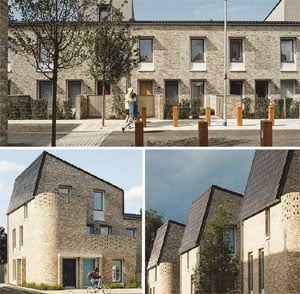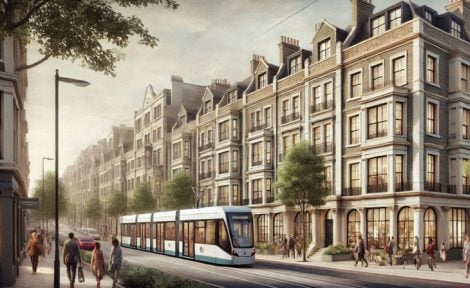Prize-winning designs
Stirling Prize award proves good housing design is possible everywhere, says Adam Hesse, Aston Mead Land & Planning Director.
 Leading land agent Aston Mead says the award of the RIBA Stirling Prize for Architecture to a development of council houses in Norfolk is proof that good design is possible for properties in all price brackets.
Leading land agent Aston Mead says the award of the RIBA Stirling Prize for Architecture to a development of council houses in Norfolk is proof that good design is possible for properties in all price brackets.
Goldsmith Street in Norwich became the first social housing project ever to win the prize from the Royal Institute of British Architects. Judges described the development of 105 homes as a ‘modest masterpiece’ and ‘an outstanding contribution to British architecture’.

For too long we’ve put up with the excuse that good design is too costly to be applied to lower value homes. But what happened in Norwich has put the lie to that argument at a stroke. This is quite a modest development of 50 one, two and four bedroom flats, together with a similar number of two-bedroom houses – but now it has been recognised as a pioneering example for other local authorities to follow.
The properties in Goldsmith Street have been built to eco-friendly ‘Passivhaus’ standards – ultra-low energy buildings which need little fuel for heating or cooling. Over a quarter of the site is communal space – lushly-planted, with a secure alleyway connecting neighbours at the bottom of their garden fences.
New town success
Whilst there has been no royal endorsement of the site in Norwich, a similar approach can be found at the Prince of Wales’s new town of Poundbury on the outskirts of Dorchester, Dorset, which started in 1993 and is currently home to 3500 people and is expected to be completed by 2025.
A representative of the Duchy of Cornwall said that despite additional consideration given to designs at Poundbury, they were actually building for fewer pounds per sq ft than most developers.
Poundbury demonstrates that it is possible to build high-quality housing at affordable prices. Around a third of the housing there is being built by housing associations for rental or shared equity ownership by people on the local housing list – but just as in Goldsmith Street, emphasis is placed on the quality of design and materials, landscaping, and attention to detail – even down to street furniture and signage.
“However, crucially at Poundbury, there is no zoning. The social housing is interspersed with – as well as being indistinguishable from – the private housing nearby. This is just the way it should be. When quality runs throughout the development, rather in privileged ‘pockets’, not only do those residents tend to take more care of their properties, but the private homes nearby prefer to have them as neighbours as well.”
Vision and principles
In his book A Vision of Britain (Doubleday, 1989), HRH The Price of Wales identifies “Ten principles” that have governed architecture since ancient times, saying that “many of them are simple common sense, like the laws of grammar that create a language.”
They include suggested ‘ground rules’ on concepts such as place, scale, harmony, materials and decoration.
In the book, the Prince writes, “Above all, it seems to me that we have suffered too long from the imposition of a kind of nondescript, mediocre, synthetic, international style of architecture which is found everywhere – from Riyadh to Rangoon. Our own heritage of regional styles and individual characteristics has been eaten away by this creeping cancer, and I would suggest the time is ripe to rediscover the extraordinary richness of our architectural past, as well as the basic principles which allowed our much-loved towns and villages to develop as they did.”
I understand why the larger developers constructing hundreds and thousands of houses a year might be tempted towards a limited number of standard styles, but SME developers, building sites with only 10-50 properties, might be able to offer something different.
The trouble is, speed and economy will often be given as the main reasons why developers opt for a few tried and trusted models, together with decoration from a limited palette.
The way ahead
I attended a talk given by a representative from the Duchy of Cornwall a few years ago, and he said that despite the additional consideration that had been given to the designs at Poundbury, they were actually building for fewer pounds per square foot than the majority of developers out there.
So it could well be that previously, people may have thought that it was only kudos and publicity generated by the Prince of Wales’ connection with Poundbury that allowed such a development to take place. But as the award-winning houses at Goldsmith Street in Norwich prove, the truth is that good design should be possible everywhere.
In fact, with ambition, careful thought, and attention to detail, there is no reason why similar examples of high quality design for properties in all price brackets should not now be created all over the UK.




